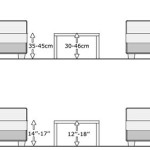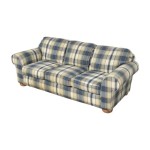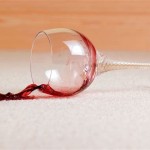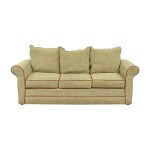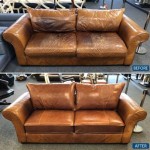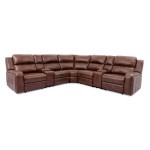Traditional Camelback Sofa: A Timeless Design
The camelback sofa, known for its distinctive humped back, is a cornerstone of traditional interior design. This classic silhouette, characterized by its sloping backrest and elegant curves, has stood the test of time, remaining a popular choice for those seeking a sophisticated and enduring aesthetic. The camelback sofa's enduring appeal lies in its versatility, timeless elegance, and ability to elevate any space with its regal presence.
Historical Origins and Evolution
The camelback sofa's origins can be traced back to the 18th century, particularly during the reign of Louis XV in France. This era saw the rise of ornate furniture designs, characterized by flowing curves and elaborate embellishments. The camelback sofa, with its pronounced humped back, emerged as a stylistic evolution of the earlier French "chaise longue," a type of elongated daybed.
The camelback sofa's profile evolved further during the Victorian era, becoming even more prominent and embellished. This period saw the introduction of intricate carvings, luxurious fabrics, and a preference for darker, richer woods. The camelback sofa's enduring popularity across these historical periods speaks to its timeless aesthetic and ability to adapt to different design trends.
Key Design Features
The defining characteristic of a traditional camelback sofa is its distinctive humped back. This feature, reminiscent of a camel's hump, creates a visually striking silhouette and provides comfortable support for the back. The camelback sofa typically features a high back and arms, often with a slightly sloping shape that adds to its elegant profile.
Other key design elements include:
- Upholstery: Traditional camelback sofas are often upholstered in rich fabrics like velvet, brocade, or damask. These luxurious materials add a sense of sophistication and grandeur.
- Wood Carvings: Intricate wood carvings, often found on the frame, legs, and arms, enhance the sofa's ornate character and create a sense of craftsmanship.
- Tufting: Buttoned tufting on the back and arms adds a touch of elegance and texture.
- Legs: The legs of a traditional camelback sofa are often carved and tapered, adding to its graceful silhouette.
Versatility and Applications
The camelback sofa's elegant design and timeless appeal make it a versatile piece of furniture suitable for a wide range of interior styles. Its grand presence adds sophistication to formal living rooms, while its comfort and versatility make it suitable for more casual settings.
Camelback sofas can be found in a variety of sizes and configurations, from petite love seats to large sectional sofas. This versatility allows them to fit seamlessly into different spaces and accommodate various seating needs. The camelback sofa's elegant and enduring design makes it a timeless investment that will remain a cherished piece of furniture for generations.

Irvins Tinware 74 Inch Classic Camelback Sofa

Decorating With Camelback Sofas English Decor Country

Eye For Design Decorating With Camelback Sofas

Camelback Sofa By Baker Originals Ba6386 80 Furniture
Our Favorite Timeless Sofas A Layered Life

Decorating With Camelback Sofas Living Room Decor Home Sofa

Timeless Sofa Styles And How To Decorate With Them

Leather Chairs Of Bath Chelsea Design Quarter Camelback Sofa Antique And Reion Sofas Furniture

Traditional Camel Back Single Cushion Sofa 179536 Black Rock Galleries

Eye For Design Decorating With Camelback Sofas

